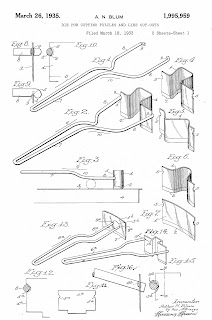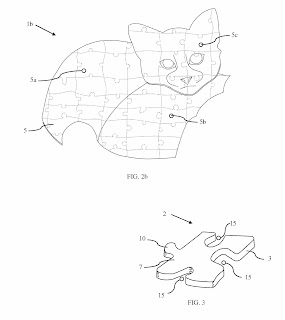There are a few inventors and their inventions that most people recognize. But usually these famous individuals claim many innovations, some of which have been largely ignored or even forgotten by the general population.
For example, probably the most famous inventor in America, Thomas Edison, is known for his electric lights, recording devices, electric transportation, and developing solutions to create a community-wide electric grid. He had more patents than any other person for decades, listed as an inventor (some joint) on 1,093 in the US alone.
One of those less frequently cited was for an electric vote recorder. Edison's "Electrographic Vote Recorder and Register" was issued patent no. 90,646 in June, 1869, years before his most illuminating (ha-ha) invention.
 |
| Edison's Electric Elections |
Of course, Edison was known for being a fairly unpleasant person, and unfairly competing with contemporaries.
One such contemporary he maligned is another of America's greatest inventors, Alexander Graham Bell. You most likely know him as the inventor of the telephone. Bell invented and patented the device that would one day morph into today's ubiquitous, hand-held computer-inclusive smart phone in 1876.
Less influential and well-remembered is the "Aerial Vehicle", patent no. 757,012, of April 1904. It isn't sufficient to carry a person, and functions more as a kite, but clearly the interest of inventors had pivoted from communications and power to new transportation by the 20th century.
 |
| Fly with Bell! |
But, did you know he invented and patented a fountain? Indeed, Tesla was granted patent no. 1,113,716 for a fountain that could utilize more water in bigger, grander displays.
 |
| Striking fountains from Tesla's labs |
No, he wasn't actually the inventor of peanut butter (a frequently-made yet inaccurate claim), but he did publish a bulletin on how to grow peanuts and 105 uses for it, and is credited with eventually pioneering at least 300 uses.
What you likely don't know he invented was a cosmetic product, granted patent no. 1,522,176. This "vanishing cream", like a concealer, was based on... peanut oil. So it's still peanut-adjacent.
If you visited my summertime "Playful Patents" display, you probably saw something about one Lonnie G. Johnson. He's most famous for inventing a squirt gun popularized as the Super Soaker.
But Johnson was actually a scientific genius outside his spare time making cool toys1, and worked for NASA for years. Evidence for this particular set of skills lies in his less-famous patent no. 4,476,693, Thermal Energy Accumulation. The purpose was to provide heated running water, such as in a kitchen sink, via more efficient processes than the standard commercially available systems.
 |
| A diagram of the thermal device |
Taking a step back in time, one Isaac M. Singer is credited with inventing the mechanical sewing machine, and was subsequently issued many patents for it, the first in 1851. Singer is still among the most popular brands of sewing machines today.
Taking a step further back in time, Mr. Singer also invented a "Machine for Carving Wood or Metal", granted patent no. 6,310 in April 1849. He was issued a second patent for improvements to wood carving machines in 1855, but otherwise only received US patents for sewing machines and their related equipment.
 |
| Singer facilitated many kinds of crafts |
Evidently McCoy also took a brief break from revolutionizing lubricants for heavy machinery and railroads to invent ironing tables. He was granted patent no. 150,876 in May, 1874 for one iteration, but no one really talks about this one when they bring up his legacy.
 |
| Somehow not as famous as the automated lubricators |
If you know of any female inventors who had some less famous inventions, mention them in a comment.








